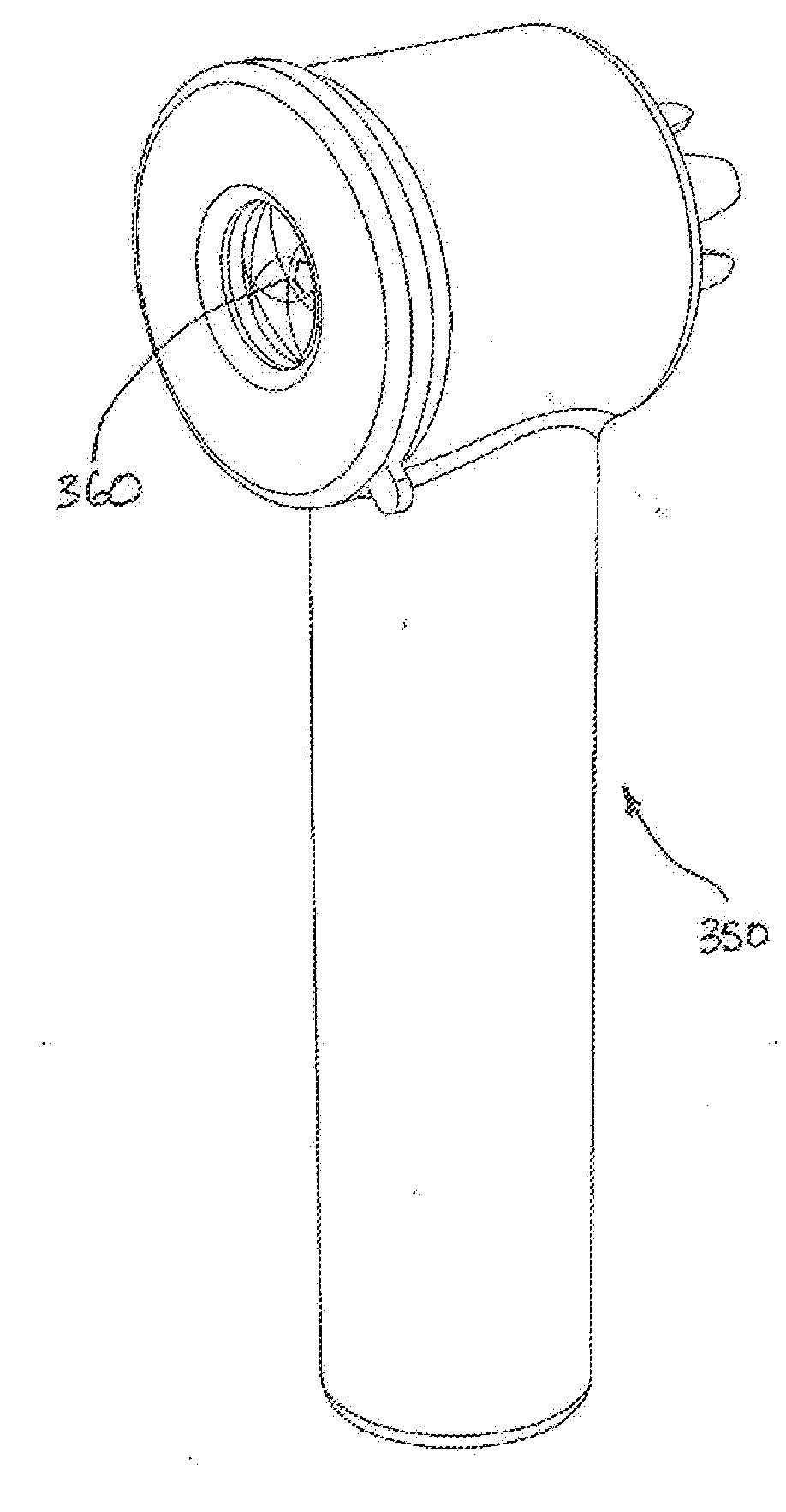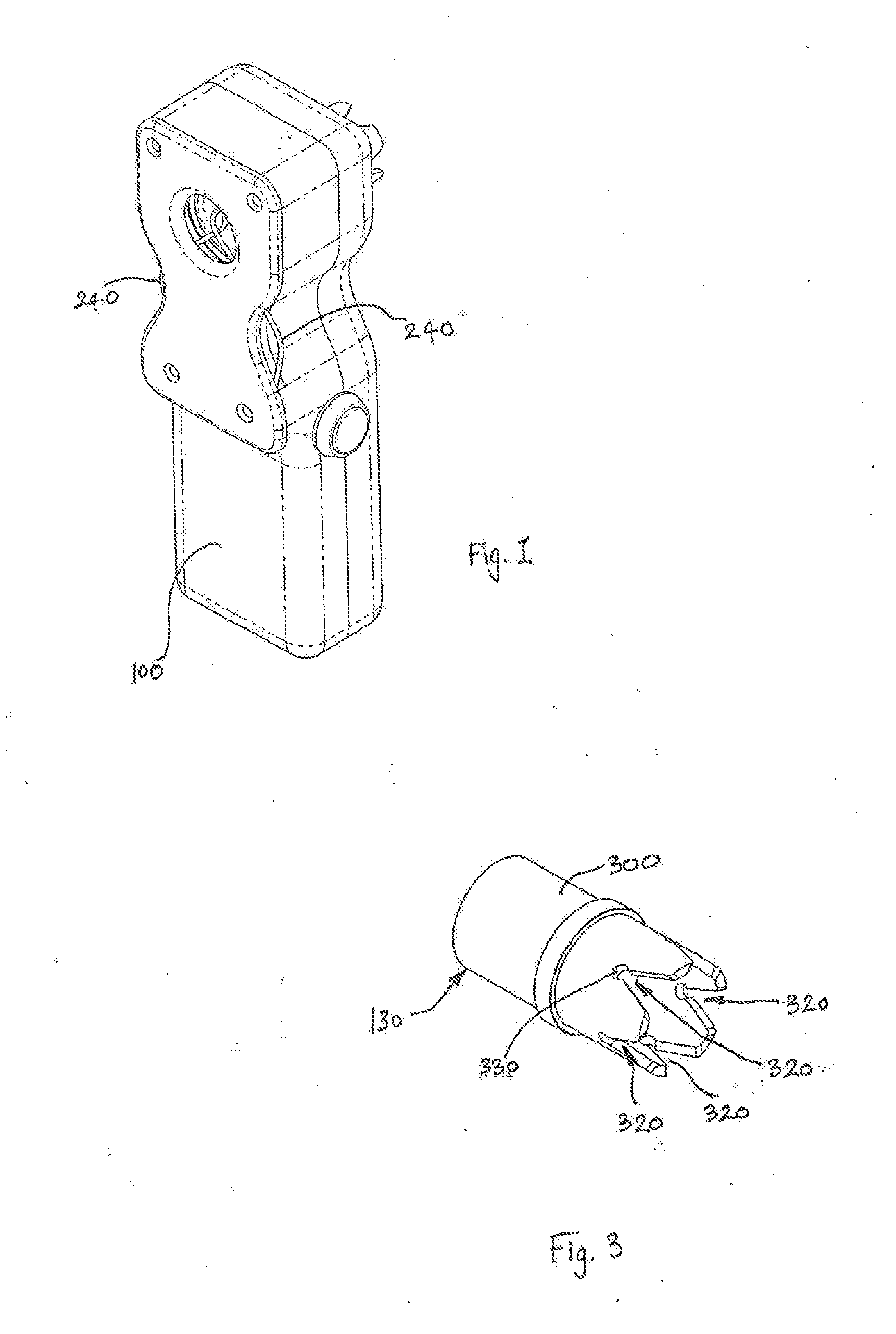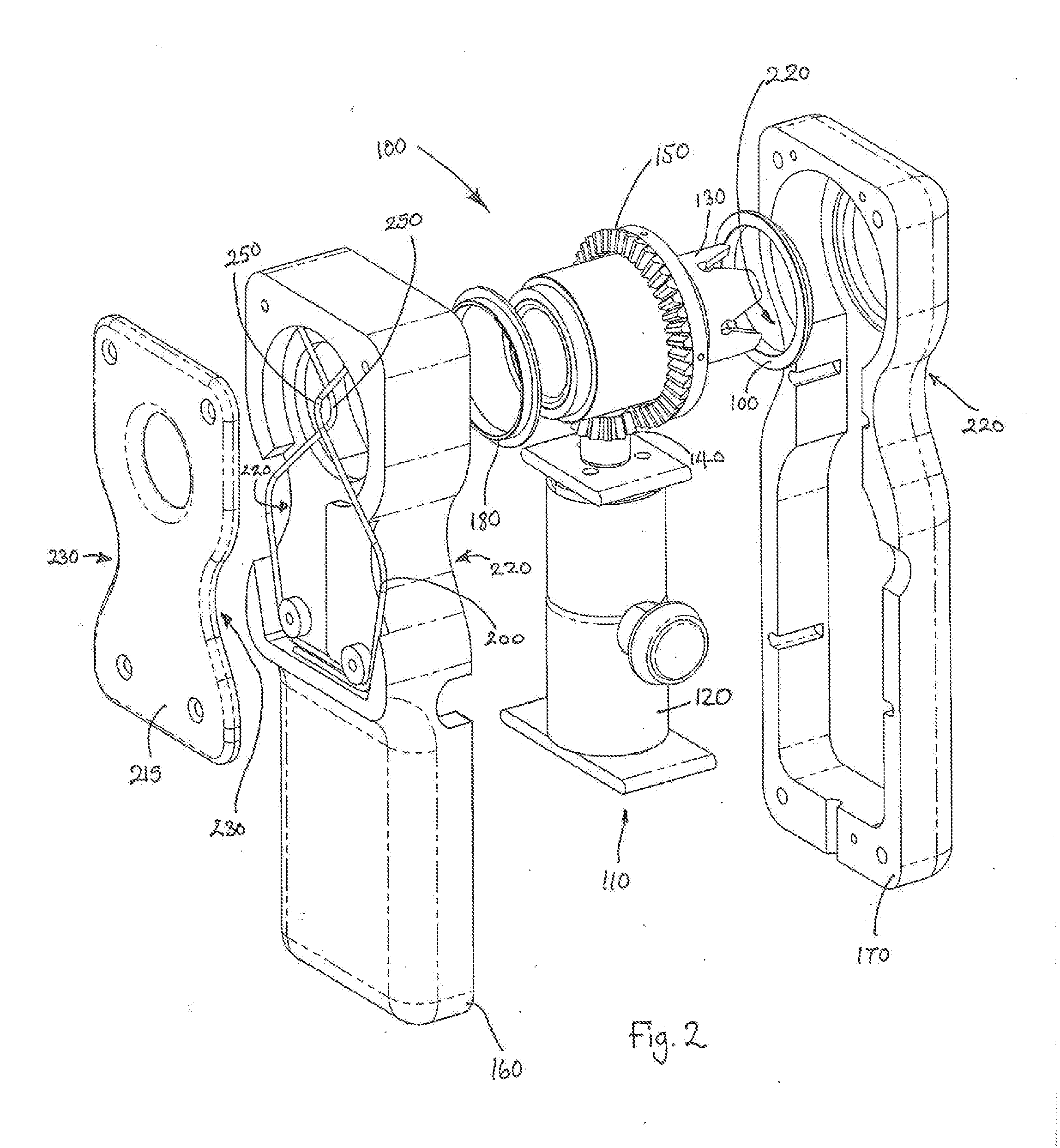Hair care apparatus
- Summary
- Abstract
- Description
- Claims
- Application Information
AI Technical Summary
Benefits of technology
Problems solved by technology
Method used
Image
Examples
Embodiment Construction
[0024]FIG. 1 shows a first apparatus 100 according to an embodiment. Details of the apparatus 100 are shown in the explosion diagram of FIG. 2. At the centre of the apparatus is a unit 110 that comprises both the motor 120 and the holder 130 for the strand of hair. As can be seen from FIG. 2 in this embodiment the motor forms part of a handle portion of the apparatus 100. Connected to the motor 120 is a first bevel gear 140. The motor 120 causes the first bevel gear 140 to rotate about its axis (which in FIG. 2 is the vertical axis). The bevel gear 140 in turn drives a second bevel gear 150. The second bevel gear 150 is fixedly attached to the holder 130 and rotates, together with the holder 130, about the longitudinal axis of the holder 130. Transmission of motion from the motor 120 to the holder 130 in this fashion provides the advantage that the spaces on either side of the holder 130 is not occupied by the motor, so that the strand of hair that is to be locked can be freely inse...
PUM
 Login to View More
Login to View More Abstract
Description
Claims
Application Information
 Login to View More
Login to View More - R&D
- Intellectual Property
- Life Sciences
- Materials
- Tech Scout
- Unparalleled Data Quality
- Higher Quality Content
- 60% Fewer Hallucinations
Browse by: Latest US Patents, China's latest patents, Technical Efficacy Thesaurus, Application Domain, Technology Topic, Popular Technical Reports.
© 2025 PatSnap. All rights reserved.Legal|Privacy policy|Modern Slavery Act Transparency Statement|Sitemap|About US| Contact US: help@patsnap.com



